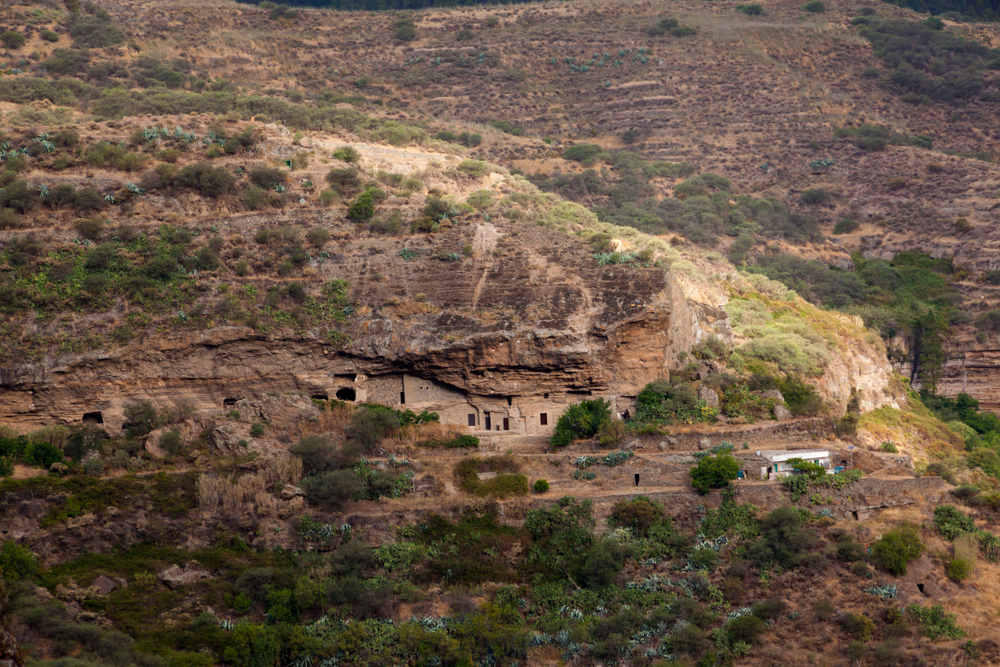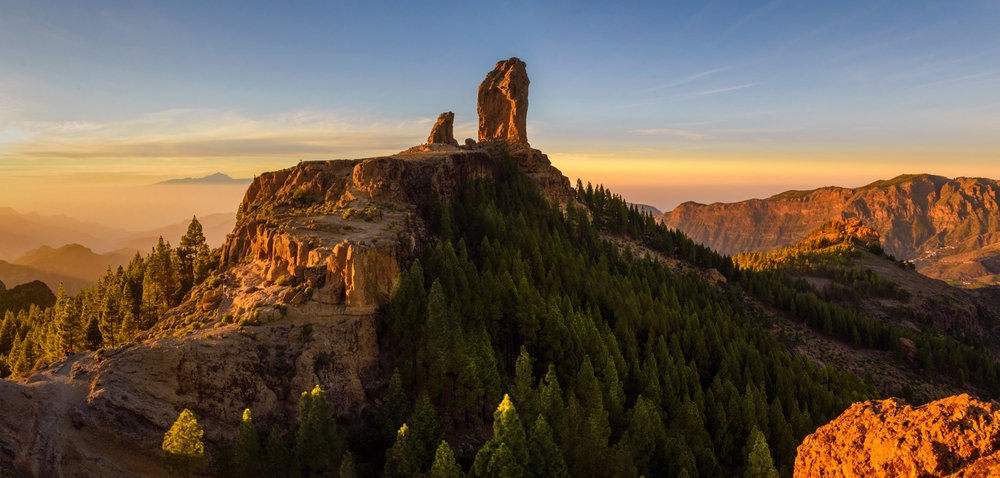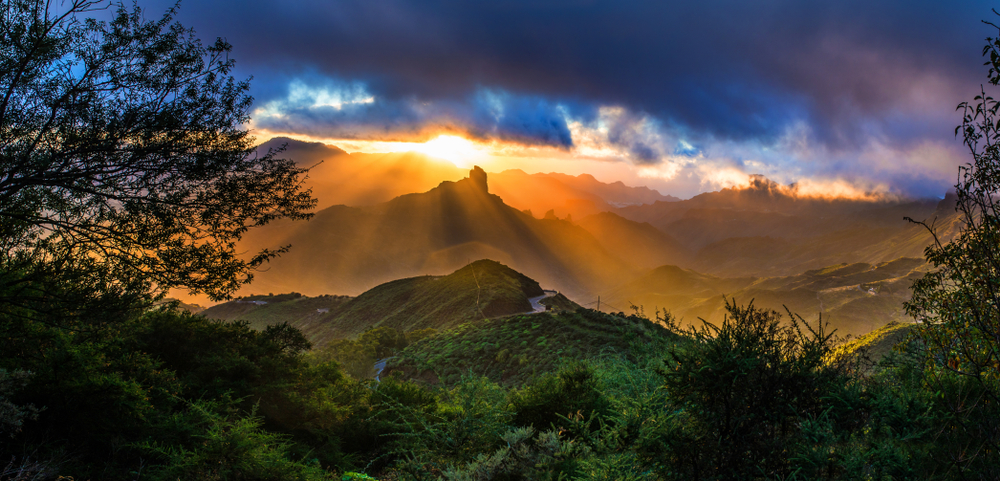In a vast mountainous area in the centre of Gran Canaria lies the archaeological site of Risco Caído and Montañas Sagradas (the Sacred Mountains of Gran Canaria), in the middle of a landscape of cliffs, rocky and volcanic formations and ravines. It was a key place for the aboriginal Canarian culture and we can find important cave paintings related to fertility cults and magical-religious beliefs.
In this article we will discover this UNESCO World Heritage Site.
What you should know about the Sacred Mountains

Let's discover this archaeological site from the troglodyte period:
Where are the Sacred Mountains located
Features of the Montañas Sagradas
The landscape of Risco Caído is notable for more than 20 caves (or troglodyte settlements) from pre-Hispanic times on the Canary Island. The caves include habitats, granaries and cisterns. They also include cult caves and two almogarenes or sacred temples: El Risco Caído and Roque Bentayga, where seasonal ceremonies were held. It’s thought that they served a cult of Mother Earth and the stars.
On the other hand, the Sacred Mountains include a group of archaeological sites in the municipalities of Gáldar, Tejeda, Artenara and Agaete with natural and artificial caves of different uses such as dwellings, granaries and burial sites. Risco Caído is just one of the 1,500 caves in this area.
Tourist information on the Sacred Mountains
We recommend exploring the cultural landscape along the various trails in the area. This way, you can also get to know more about the nature of Gran Canaria. El Risco Caído and las Montañas Sagradas in Gran Canaria have an Interpretation Centre, ideal for discovering the secrets of the world of the aborigines of the Canary Islands. The Risco Caído Neocave, an exact replica of the lunisolar temple, is also worth a visit.
As for the caves, it’s thought that Risco Caído may have served as a prehistoric astronomical marker thanks to the beam of light that enters through the vault of one of its caves, which is projected onto the walls and illuminates some of the cave engravings.
Cultural information
For more than 1,500 years, pre-Hispanic Amazihg (Berber) populations and the European civilisation that emerged from the Castilian conquest of the Canary Island at the end of the 15th century coexisted in this area. The present-day population of the island therefore has its roots in both cultures. Both in the "almogaranes" or temples of Roque Bentayga and Risco Caído, ceremonies related to the seasons of the year were held.
Environmental information
Both the Montañas Sagradas and the Risco Caído occupy almost the entire Caldera de Tejeda, the Tamadaba massif and part of the Barranco Hondo riverbed. This cultural site covers around 18,000 hectares. It’s a paradise for hikers, as here you can discover many impressive landscapes such as the pine forest or bird species such as the great spotted woodpecker or the Gran Canaria blue chaffinch.
Discover exceptional places of cultural and natural importance

The mountainous centre of the island of Gran Canaria is extraordinary in its biogeography and geomorphology. It’s also unique in the world for its troglodyte life, for the Amazigh island culture and, above all, for the cultural survival of this sacred space.
If you want to visit the Sacred Mountains in Gran Canaria and you don't know where to stay, we recommend you to stay in some of our rural houses in Gran Canaria, where you can enjoy the best natural environment of the Canary Island. All our holiday rentals are equipped with the best services. In addition, with our rural houses or villas in Gran Canaria you can enjoy your private pool, BBQ grill, large terraces and gardens, and most of them allow pets.
If you want to know more, visit our article about the Risco Caído.

